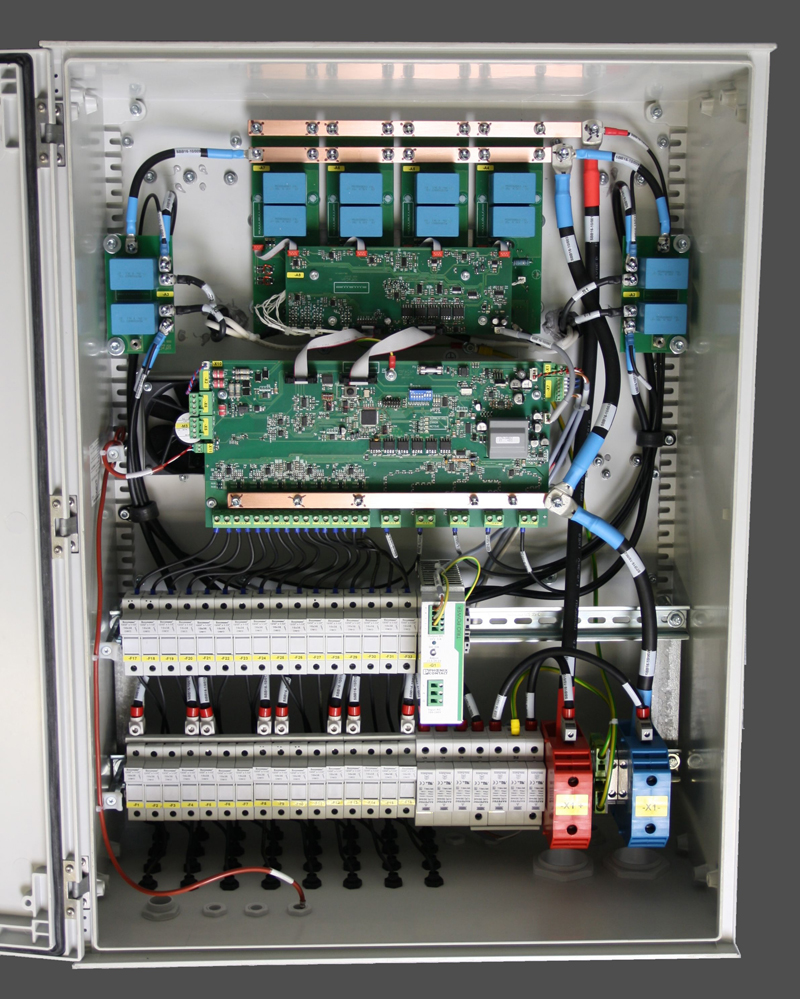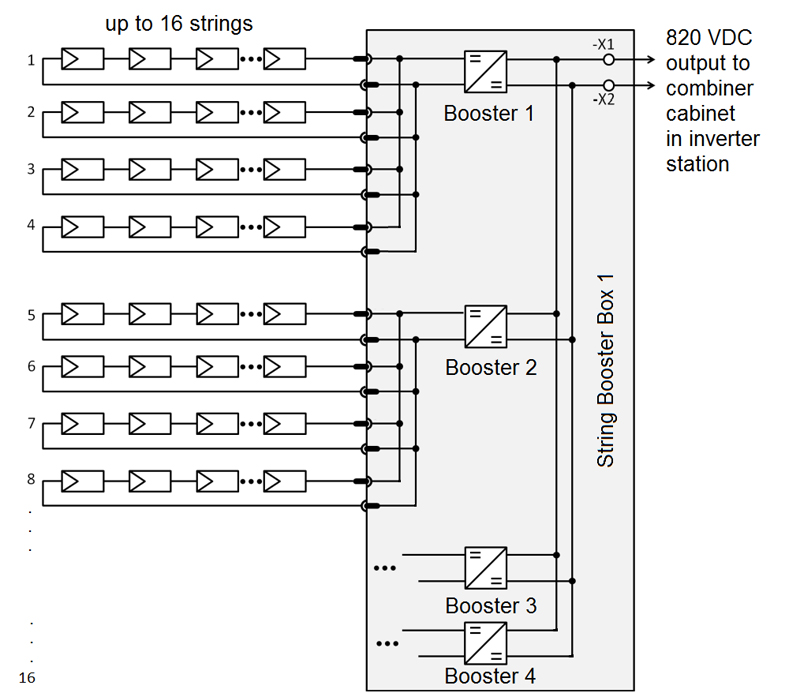Author:
Frank Hinrichsen and Mark Ahmling, Wind and Sun Technologies
Date
12/18/2012
Planners of photovoltaic power plants are no longer bound to string inverter concepts if multiple MMP(maximum power point)-trackers are required. Central inverter systems are, today, standard for the realisation of large photovoltaic power plants (reference 1). Plug-and-play systems that comprise the DC combiner cabinets, inverters, MV (medium voltage) transformer, and MV switchgear in one station or container are available from multiple companies. One station typically involves two or three inverters with a total output power of 1 to 1.5 MW. Each inverter uses an MPP-tracking algorithm to achieve the optimum working voltage for the photovoltaic panels. Therefore the electrical topology on the DC side has to be an extensive parallel connection of dozens of strings consisting of the same number of panels, same panel type, and same spatial direction. Additionally it has to be assured that partial shading caused by trees, wind turbines, and even by other panel rows is avoided for every position of the sun. That is because a partial shaded string has a significantly lower MPP-voltage and therefore delivers not much power, if connected in parallel to other non-shaded strings. String inverter concept Where such an arrangement cannot be realised, planners of PV power plants normally choose string inverters of typically 10 to 20 kW instead of central inverters, in order to achieve MPP-tracking for much smaller groups of paralleled strings (1 to 4). The disadvantage of this concept is that hundreds of inverters have to be installed, controlled, and maintained. Three-phase AC-cabling with four or five wires and a rather low voltage of 400 V has to be used instead of two wires (plus and minus) with about 450 to 900 V. Groups of inverters have to be connected in combiner boxes in order to increase the copper cross-section of the connection to the next MV transformer. The MV equipment has to be planned and installed additionally in the form of one or more transformer stations within the PV plant. This leads to higher costs of investment and operation. String Central Inverter System A novel system combines the benefits of both systems: The easy installation and control of a pre-assembled central inverter system and the flexibility in string arrangement and module-type choice known from the string inverter concept. The basic idea is to equip the string combiner boxes—that are required anyway in a central-inverter installation—with booster stages (figure 1).


The result is the so-called string booster box. One implementation, designated SBB16-10 appears in Figure 2. A simplified schematic appears in Figure 3. Every booster stage is responsible for four strings and features its own independent MPP-tracker. The common output voltage of the booster stages is limited to 850 V DC in case of open circuit. If connected to the DC-link of the inverter by automatic controlled motor-driven DC circuit breakers, this voltage is brought down to the controlled DC-link voltage of about 820 V. Thus, power transfer to the inverter station is performed on a constant high DC voltage level leading to very low power losses in cabling. Because of the constant high DC-link voltage, the AC output voltage level of the inverter can be set significantly higher. Therefore the power rating of the inverter is also higher than if it was used in a system with conventional string combiner boxes where the DC-link voltage varies with solar irradiation. As a consequence, a central inverter system formerly rated to 1.25 MW is now able to convert 2 MW. Thereby, power loss rise is far less than linear because its main portion consists of conduction loss and the inverter output currents remain the same. Naturally the booster stages have additional losses, but these are kept low by employing silicon carbide power devices. An efficiency of around 99 % is achieved for the box. Figure 1 indicates the flexibility in arranging strings with different numbers of modules and different types of modules in different mounting positions. Of course, such a situation can be found in a medium-power installation with a 100 kW inverter rather than in a large PV plant that requires a 2 MW station. But that does not matter because the string booster box can be connected to small central inverters as well. String booster boxes also fulfill the functions of fusing the strings and monitoring their currents like normal string combiner boxes do. Additionally, the string booster box integrates over-voltage protection. Communication between boxes and the inverter system is implemented by CAN-BUS while communication to the outside is via Ethernet. Practical experience After extensive field tests of a number of string booster boxes in an older PV plant with modified 200 kW inverters, the first PV power plant that was planned from the beginning for the novel String Central Inverter System is working well since September 2012. It features a total number of 36 string booster boxes that connect to four inverters in two containers. Sun and Wind Technologies References: 1. Hinrichsen, F.:"1 MW of Power from the Sun", Power Systems Design Europe, Sept. 2009